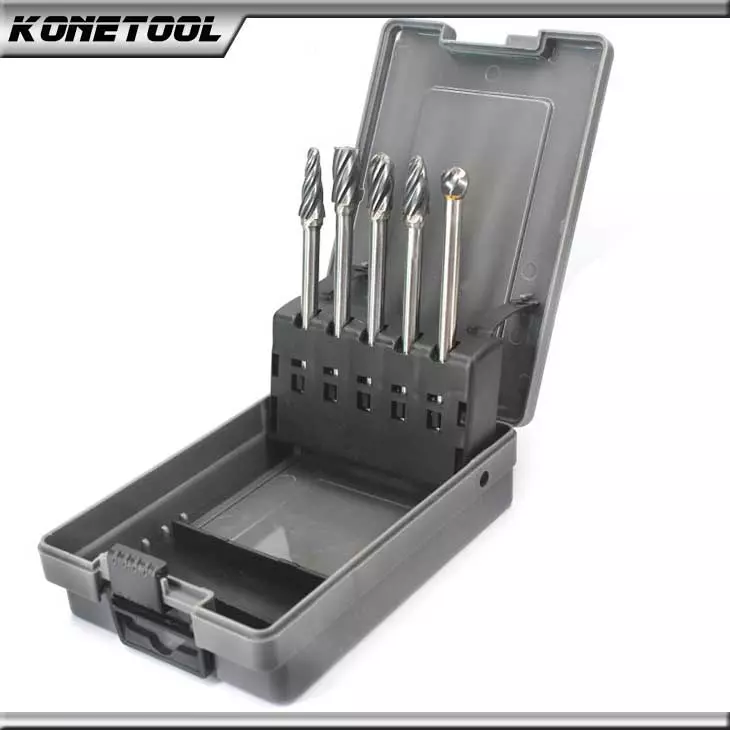
Carbide burrs, also known as rotary files or carbide rotary files, are cutting tools used in metalworking to remove material from a workpiece. They are made from tungsten carbide, which is a very hard and durable material that can withstand high temperatures and heavy use. In this blog post, we’ll discuss the uses, types, and maintenance of carbide burrs.
Uses of Carbide Burrs
Carbide burrs are used in a variety of metalworking applications, including:
Deburring
Carbide burrs are used to remove burrs and sharp edges from metal components. This is especially important in precision metalworking, where burrs can interfere with the fit and function of a component.
Grinding
Carbide burrs are used to grind and shape metal components. They can be used to create intricate shapes and contours, such as those needed for molds and dies.
Welding
Carbide burrs are used to prepare metal components for welding. They can be used to remove old welds, clean up edges, and prepare surfaces for new welds.
Engraving
Carbide burrs are used to engrave designs and patterns into metal components. They can be used to create fine details and intricate designs.
Types of Carbide Burrs
Carbide burrs come in a variety of shapes and sizes, each designed for specific applications in metalworking.
Cylinder
Cylinder carbide burrs have a straight cylindrical shape with no taper or flutes. They are ideal for grinding and shaping flat surfaces and edges.
Ball
Ball carbide burrs have a spherical shape and are ideal for grinding and shaping concave surfaces.
Oval
Oval carbide burrs have an oval shape and are ideal for grinding and shaping curved surfaces.
Tree
Tree carbide burrs have a conical shape with a rounded tip and are ideal for grinding and shaping irregular surfaces.
Flame
Flame carbide burrs have a flame-shaped tip and are ideal for grinding and shaping curved surfaces, such as those found in molds and dies.
Taper
Taper carbide burrs have a conical shape with a pointed tip and are ideal for grinding and shaping tapered surfaces, such as those found in threads and grooves.
Maintenance of Carbide Burrs
Proper maintenance is important to ensure that carbide burrs perform at their best and last as long as possible.
Clean and Lubricate
After each use, clean the carbide burr with a soft-bristled brush to remove any debris or metal shavings. Lubricate the burr with a light oil or cutting fluid to prevent rust and corrosion.
Sharpen
Carbide burrs can become dull over time, especially with heavy use. Sharpen the burr regularly using a diamond file or sharpening stone. Be sure to follow the manufacturer’s instructions for sharpening the burr.
Store Properly
Store carbide burrs in a dry, cool place to prevent rust and corrosion. Keep them in a protective case or container to prevent damage.
Use Properly
Use carbide burrs properly to prevent damage and ensure that they perform at their best. Use the appropriate burr for the job and follow the manufacturer’s instructions for use.
Conclusion
Carbide burrs are cutting tools used in metalworking to remove material from a workpiece (KoneTool Carbide Burrs Set). They are made from tungsten carbide, which is a very hard and durable material that can withstand high temperatures and heavy use. Carbide burrs come in a variety of shapes and sizes, each designed for specific applications in metalworking. Proper maintenance is important to ensure that carbide burrs perform at their best and last as long as possible. Clean and lubricate the burr after each use, sharpen it regularly, store it properly, and use it properly to prevent damage and ensure optimal performance. With the right carbide burr and maintenance, you can achieve professional-quality results in your metalworking projects.